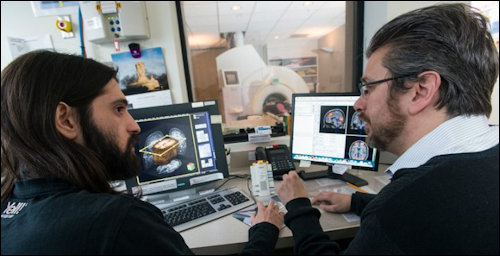
Frank Krueger (left) is co-director of the Center for the Study of Neuro-economics. Photo credit: George Mason University.
George Mason University has received the coveted “R1” status bequeathed by the Carnegie Classification of Institutions of Higher Education. Only 115 institutions across the country earn the “highest research activity” designation.
States the cover story of the winter edition of Mason Spirit magazine:
About 20 years ago, Mason thoughtfully began building a research portfolio that ranged from public policy to the physical sciences. Mason’s total research expenditures were nearly $27 million in 1995, increasing to about $65 million in 2005, and jumping to $101 million in 2016. The university is setting its sights high and aiming or $250 million by 2025.
Bacon’s bottom line: From an economic development perspective, Mason’s climb to R1 status is a strong positive. Northern Virginia needs a strong research university to bolster the region’s biomedical and IT sectors.
From an undergraduate student perspective, however, the R&D emphasis is a mixed blessing. Stronger research programs create opportunities for some undergrads. GMU’s engineering program, for instance, has built extensive partnerships with Northern Virginia industry that makes summer internships more readily available. But boosting research is expensive — lab facilities and star faculty don’t come cheap. Building research programs puts pressure on university administrations to increase tuition. Between the 2006-07 school year and the 2015-16 school year, the cost of in-state attendance at GMU increased 57%, more than the 53% average for all of Virginia’s public, four-year schools.
The trade-offs are complicated. Which delivers more value to Virginians — economic development opportunities stemming from R&D or from lower barriers to attendance for undergraduate students? You won’t find those questions highlighted in the glossy, university magazines.


